Bridging Languages with Precision — Especially into Japanese
NAI, Inc., the company behind NAIway Translation Service, has been a trusted language partner to Japanese researchers since 1995. Originating in the rigorous world of academic publishing, we built our foundation on providing meticulous editing and expert translation of English-language scientific papers, particularly in medicine, chemistry, engineering, pharmacology, agriculture, biotechnology, dentistry, and nursing. Through personalized support for revisions and resubmissions, we earned our reputation not only for linguistic excellence but for standing by our clients through every stage of the publication journey.
This pursuit of near-perfection in language has shaped our entire philosophy. In our fifth year, we launched NAIway as a dedicated multilingual translation division, carrying forward the DNA of our editorial roots into a broader world of business, legal, and technical translation.
What sets us apart, especially in translations into Japanese, is our unwavering focus on linguistic and cultural authenticity. For European and Asian source languages alike, we rely on top-tier native Japanese translators based in Japan. This ensures every nuance, every layer of indirectness or cultural subtlety, is faithfully localized, not just linguistically, but emotionally, for the Japanese reader. It's not just about accuracy. It's about resonance.
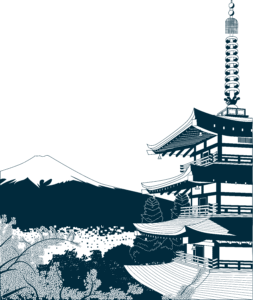
For more details, please feel free to contact us.
Structure and Cultural Depth of the Japanese Language
■ The Japanese Writing System: Kanji, Hiragana, and Katakana
Japanese employs a unique combination of three scripts, kanji, hiragana, and katakana, each with distinct roles and origins.
- Kanji are logographic characters imported from China around the 4th century. Each character conveys both meaning and sound, and they have long served as the foundation of written Japanese, especially in official documents and religious texts.
- Hiragana evolved from the cursive forms of kanji during the Heian period and were initially used primarily by women and aristocrats. Today, they are used for grammatical elements, inflections, and soft expressions.
- Katakana were developed by Buddhist monks, who extracted components of kanji to annotate Chinese scriptures. Katakana is now used mainly for foreign words, technical terms, and onomatopoeia.
This tri-script system allows Japanese writing to be visually structured, semantically rich, and highly expressive.
■ The Art of Script Choice in Japanese: Kanji, Katakana, or Hiragana?
Japanese writing is not just about choosing the right words, it's about choosing the right script. One of the most distinctive and challenging features of Japanese is that many words can be written in kanji (logographic characters), katakana (angular syllabary), or hiragana (rounded syllabary), and all can be correct depending on context, tone, or stylistic intent.
One Word, Multiple Faces
Here are examples of common nouns that can be accurately written in any of the three scripts:
| Kanji | Katakana | Hiragana | Nuance / Use Case |
|---|---|---|---|
| 煙草 (tobacco) | タバコ | たばこ | Katakana often used on packaging, hiragana in casual text. |
| 砂糖 (sugar) | サトウ | さとう | Katakana used in ingredient lists, hiragana in conversation. |
| 眼鏡 (glasses) | メガネ | めがね | Product ads use katakana, novels often use kanji or hiragana. |
| 寿司 (sushi) | スシ | すし | Katakana used in global or menu contexts, hiragana more casual. |
| 薬 (medicine) | クスリ | くすり | Katakana common in pharmaceutical branding. |
| 飴 (candy) | アメ | あめ | Katakana for product packaging, hiragana for soft tone. |
| 花 (flower) | ハナ | はな | Hiragana is often used in poetry or children’s books. |
Why Script Matters
- Kanji lends formality, clarity, and traditional depth.
- Katakana conveys a modern, technical, or commercial feel, and is widely used for emphasis or foreignness.
- Hiragana provides softness, familiarity, and emotional warmth, common in dialogue and children’s content.
Choosing the “right” script is not just a stylistic preference, it can shape how a message is perceived: warm or cold, formal or casual, traditional or modern. Misusing or overlooking these nuances can drastically change the tone or even the intended audience.
Why You Need a Human Touch—And Why NAIway Delivers
With such complexity in play, machine translation or inexperienced translators often fail to capture these subtle but powerful distinctions. An incorrect script choice can undermine brand voice, confuse readers, or diminish cultural authenticity.
This is where NAIway’s translation excellence truly matters. Our experienced professionals don’t just translate words, they understand tone, intent, audience, and cultural context. We make informed decisions about how each word should appear, whether in kanji, katakana, or hiragana, to ensure your message resonates naturally and effectively in Japanese.
Translation is not only about meaning—it’s about making meaning look and feel right.
■ Grammatical Characteristics of Japanese
Japanese is classified as an agglutinative language, where grammatical functions are expressed through attached particles and verb endings, rather than rigid word order.
- The typical sentence structure is Subject–Object–Verb (SOV).
- Particles (such as wa, ga, wo, ni, de) determine the grammatical role of each word.
- Verb and adjective endings convey nuances such as tense, negation, politeness, and modality.
This flexible grammar enables subtle shifts in tone and meaning through changes in verb endings, rather than through reordering entire sentences.
■ The Culture of Keigo (Honorific Speech)
One of the most culturally distinctive aspects of Japanese is its elaborate system of keigo, or honorific speech. Keigo reflects the speaker’s relationship with the listener or with the subject of the sentence, and is divided into three primary categories:
- Teineigo (Polite Language) – Forms like desu and masu that show general politeness toward the listener.
- Sonkeigo (Respectful Language) – Used to elevate the actions or status of others (e.g., irassharu, nasaru).
- Kenjōgo (Humble Language) – Used to humble one’s own actions to show respect to others (e.g., mōsu, ukagau).
This linguistic structure evolved from Japan’s deeply hierarchical society, where social harmony (wa) and consideration for others are paramount. The system became particularly formalized during the medieval and early modern eras, and was later reinforced through national education during the Meiji period.
■ Why Accurate Japanese Translation Requires True Expertise
Given the structural complexity of Japanese and the cultural depth embedded in its grammar and honorific system, literal translations or machine-generated output often fail to capture the intended meaning, sometimes even leading to serious misunderstandings.
That’s why NAIway’s translation quality makes a critical difference. Our expertise, developed through decades of real-world experience and professional linguistic insight, ensures that even the most intricate Japanese expressions are translated with precision, cultural sensitivity, and clarity.. If you need a properly localized conversion, we recommend requesting a new translation.
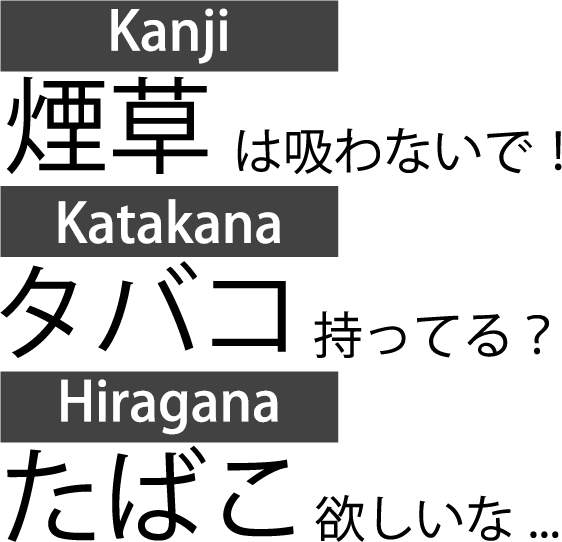
Japanese Translation Rates
Below are NAIway’s standard translation rates.
Our regular translation fees cover all of the following services, so you can rely on us with confidence.
Translation
+
Native-Level Quality Check
+
After-Support *
*As part of our after-support, we handle revisions and inquiries within the post-delivery verification period (The standard verification period is one week).
(Amendments or additions to the original text cannot be processed during the verification period. Please be advised that such revisions may be subject to additional fees.)
Japanese to English Translation

AI Translation x Check :
From 5.09 JPY per character
Human Translation :
From 14.26 JPY per character
English to Japanese Translation

AI Translation x Check :
From 5.09 JPY per word
Human Translation :
From 16.3 JPY per word
- The actual cost will be estimated based on the content and volume of the document. Please send us the document when requesting a quote.
- Minimum Charge Policy. Depending on the character/word count and other conditions, we have a two-tier minimum charge system of 5,500 Japanese Yen or 11,000 Japanese Yen (tax included). This ensures coverage of the essential costs involved in translation coordination and quality assurance.
- International Client Minimum Charge Policy. In consideration of the additional procedures involved in international transactions, we kindly ask that orders from overseas clients be limited to projects valued at ¥50,000 or more. For quotations below this amount, a minimum charge of ¥50,000 will be applied as our standard international client policy.

For more details, please feel free to contact us.
Key Considerations When Translating from European Languages into Japanese
Translating from European languages such as English or French into Japanese is far more than a direct word-for-word conversion. It requires a deep understanding of cultural nuance, linguistic structure, and communication style. Here are some of the most important points to consider:
■ Structural Differences
Japanese sentence structure differs fundamentally from that of European languages. While English and French typically follow a Subject–Verb–Object (SVO) order, Japanese uses a Subject–Object–Verb (SOV) structure. In translation, this often means reordering entire sentences to make them feel natural in Japanese, not just grammatically correct.
■ Level of Explicitness
European languages tend to state things more directly. Japanese, in contrast, often leaves subjects implied, uses passive voice more freely, and favors subtle expressions. A literal translation may sound awkward, overly assertive, or even rude. The key is to adjust tone and perspective to align with Japanese communication norms.
■ Politeness & Honorifics
Japanese has a highly developed system of politeness, including honorific (keigo) language that reflects the relationship between speaker, listener, and subject. European languages do not encode social hierarchy in the same way. Translators must carefully determine the appropriate level of formality and apply keigo correctly, not just mechanically, but contextually.
■ Cultural Context & Localization
Idioms, metaphors, humor, or culturally rooted references in European languages often require adaptation, not direct translation. Effective Japanese translation demands a shift in expression to preserve intent and resonance with the target audience, this is where localization, not just translation, becomes crucial.
■ Script and Style Choices
Japanese offers three scripts, kanji, hiragana, and katakana, which must be used appropriately depending on the context. Translators must choose the right script not only for readability but also for tone, audience, and brand consistency.
■ Why Expertise Matters
Due to these complexities, machine translation and inexperienced translators often produce rigid, unnatural, or culturally mismatched Japanese. That’s where NAIway makes the difference.
At NAIway, our seasoned linguists go beyond literal translation. We ensure that your message is accurate, fluent, and culturally attuned, a Japanese version that truly speaks to Japanese readers.
European ideas, Japanese expression. That’s our craft.
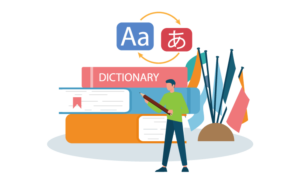
NAIway's Quality Assurance System
At NAIway Translation Service, we believe that quality management is our top priority as a professional translation company. To ensure the highest standards, we have developed our own Quality Assurance System (QAS) and implement strict quality control measures.
For high-quality Japanese-Chinese and Chinese-Japanese translations, every document undergoes a two-step review process: after the initial translation, a second translator conducts a thorough quality check.
We meticulously review each character and sentence, ensuring logical flow, terminology consistency, and appropriate expressions to deliver a refined translation tailored to your needs.
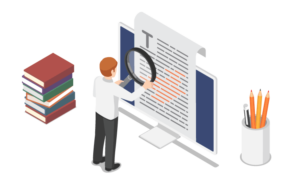
Multilingual Translation Support
At NAIway, we offer multilingual translation services. In addition to Chinese, you can request translations for English, Korean, Thai, and more—all simultaneously.
This eliminates the hassle of working with multiple translation providers for different languages. And of course, we ensure high-quality translations in every language we offer.
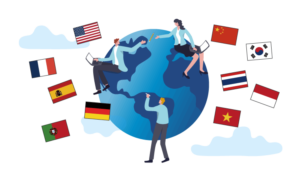
For more details, please feel free to contact us.
Introduction to Our Japanese Translators
Here are some of the translators currently working with or registered at NAIway.

Quotation & Inquiries
If you have any questions regarding our services or would like to request a quote, feel free to contact us at any time.
